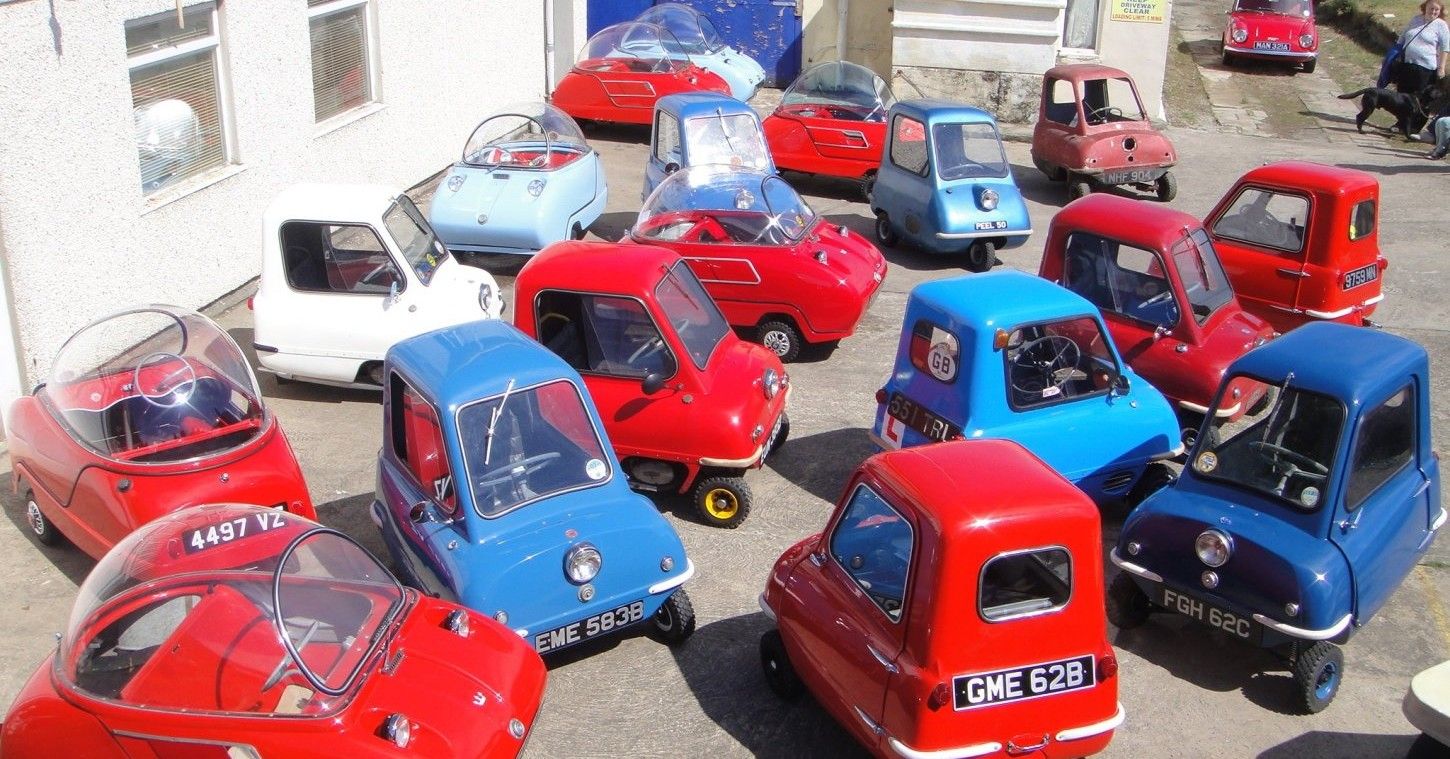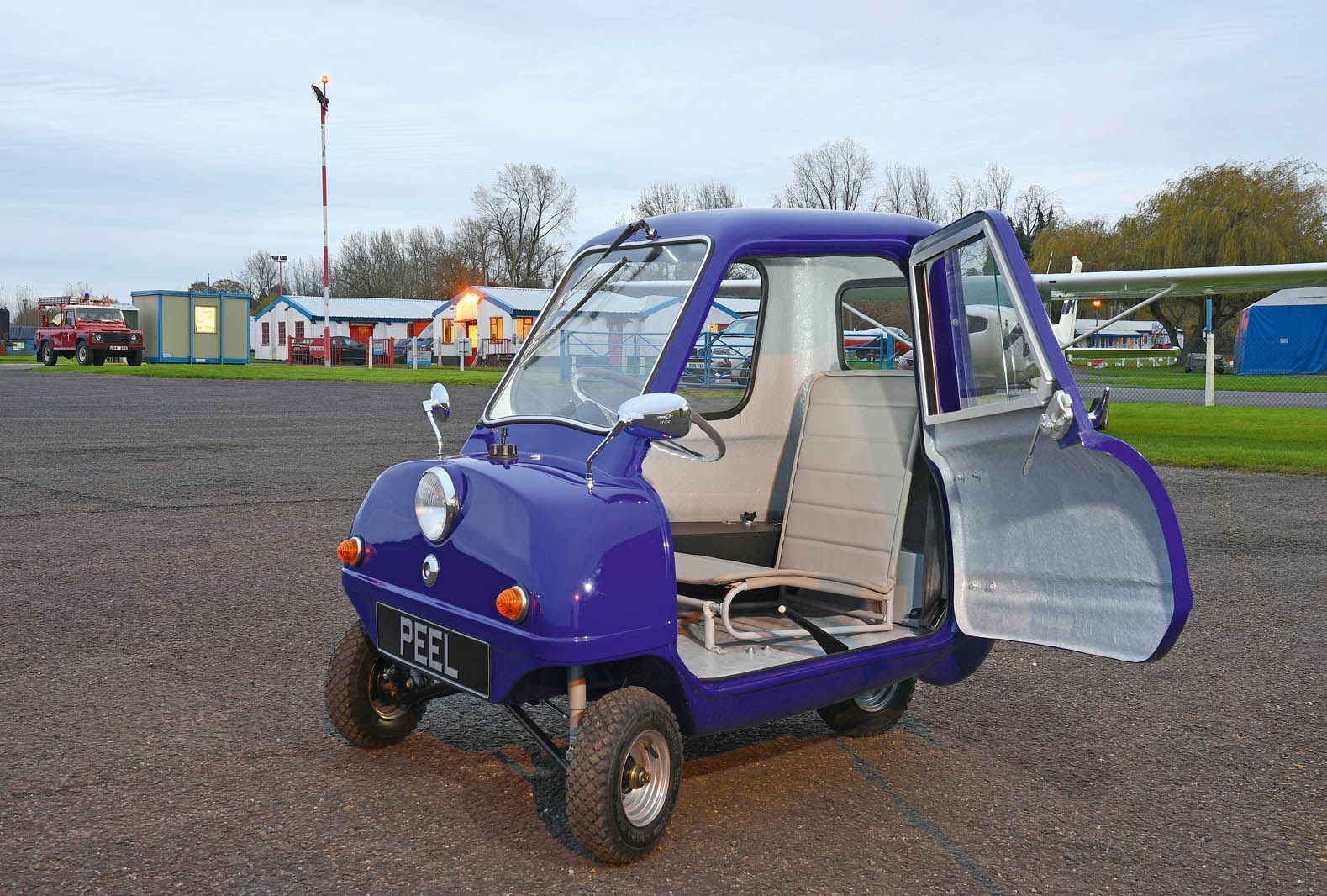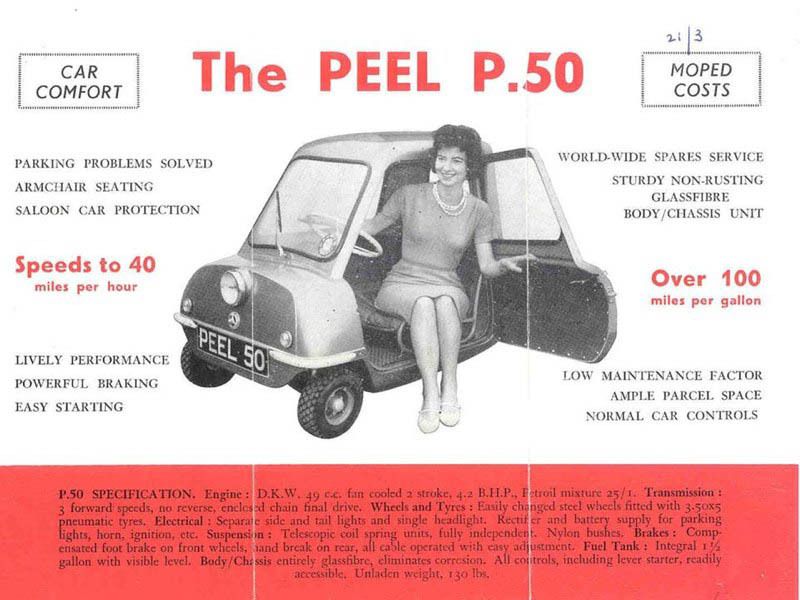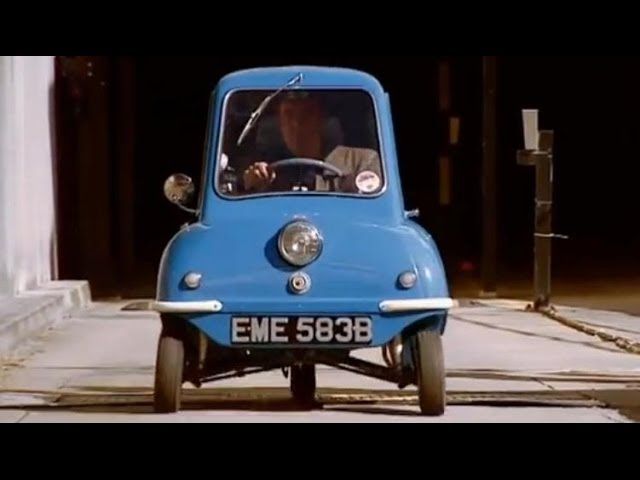If you were under the illusion that a late model Fiat 500 or even a Smart Car were small cars, you're mistaken. Modern safety standards mean that today, a car can't truly be tiny anymore. This wasn't the case in the early 1960s. Back then, people could care less about crash impacts or crumple zones. So you could build cars as small and underpowered as you dared create it. These were the conditions that gave us the Peel P50.
Today let's take a trip back to the 1960s to learn how the smallest and slower car in the world came to be and where it is now.
Small Island, Smaller Car
The Peel P50's design was inspired by the island on which it was built. The Isle of Man sits in the Atlantic ocean in between England and Ireland. This tiny island is well known for its fishing industry most of the year, and tourism helps contribute to the local economy during the summertime. The most important thing about this island for petrolheads is the world-famous motorcycle race that occurs every year here, the Isle of Man TT (Tourists Trophy). Often cited as the most famous and dangerous two-wheeled racing event in the world, hundreds of riders have lost their lives zipping around the cramped and narrow roads snaking across the Isle like serpents.
In a little town on this island called Peel, a man called Cyril Canell first came up with an idea for a microcar built for the roads of his home island. One that was small enough to fit comfortably on the narrow and winding roads which people had to commute across when there weren't motorcycle zooming across. Peel Engineering, the company Canell worked for, was known mostly for constructing fiber-glass panels for boats and motorcycles. Therefore, it wasn't stretch when Canell and a small group of co-workers created a lightweight fiberglass body and fitted a 49 cc 3.5 horsepower engine from a scooter underneath. Cost-saving measures came in the form of the comically cute single headlamp, single windscreen wiper, and of course, the hilarious single back wheel.
Inside the cabin, the P50 was advertised as able to transport one driver and one handbag comfortably. The single-seat comes without a seat belt and is little more than a piece of lawn furniture with a thin cover of vinyl over the top.
Depending on the driver's weight, the P50 topped out at around 30 mph in a car that only weighs a touch under 300 pounds. The prospect of driving this puny machine down a windy island road seems just as terrifying as competing in the TT race. Advertisements touted things like 100 miles per gallon fuel economy and a competitive price compared to equivalent motorcycles. With an inflation-adjusted launch price of around five thousand dollars, Peel was confident they'd come up with the perfect utilitarian island runabout. Unfortunately for the pokey team of engineers, the P50 didn't sell well. The company did go on to make a two-seater model with a bubble canopy called the Trident. The trident was every bit as adorable as the p50, but it too failed to sell. By 1973, Peel ceased production on all microcars for good.
Jeremy Clarkson Makes It Famous
The P50 was pretty much unknown outside of the Isle of Man for many years after production ended. That all changed in 2007 when our favorite motoring journalist from the BBC fit his substantial two-meter plus tall frame into a blue P50 and made it a household name. He engaged in all kinds of zany shenanigans on the streets of London and through the BBC's office complex. Safe to say this microcar built for windy island roads looks hilarious, scooting around the streets of one of the busiest cities in Europe. Cyril Cannell originally envisioned island socialites lugging their P50s in and out of their beach houses like suitcases. Instead, we marveled as Jeremy Clarkson maneuvered the little car past security bollards meant to keep cars away from the building, and then proceeding to fit the thing in a crowded elevator. As impractical as it may have been as a form of transportation, pairing the little Peel with Jeremy Clarkson made for some of the best television ever to bless the BBC, from a show so chocked full of memorable moments, the film about the Peel P50 stands out as one of the all-time greats.
Back From The Dead
Despite being launched at around $200 U.S dollars, the few surviving P50's now fetch astronomical six-figure prices at auction. Happily, in 2011, two entrepreneurs named Gary Hillman and Faizal Khan started selling revised models of the original car. Built with the same fiber-glass compounds just like those from the '60s, this updated version comes either with a similar spec two-stroke engine as the originals or an electric DC motor. The company ships completed versions of the P50 and the Trident, as well as self-assembly kits at prices ranging from seven thousand to 24 thousand British pounds depending on the choice of engine and accessories. There's a limited edition cabriolet version available, in case for some reason you wanted the car to be even less safe. The electric turbo model is rated at a 50 mile per hour top speed. We imagine getting up to that speed in one of those would be pants soiling levels of terrifying. Check their website if you want to learn more.
Sources: p50cars.com, BBC , isleofman.com, AutoCar
Next:5 Small Cars That Make People Point And Laugh (5 That Will Leave More Powerful Machines In The Dust)




